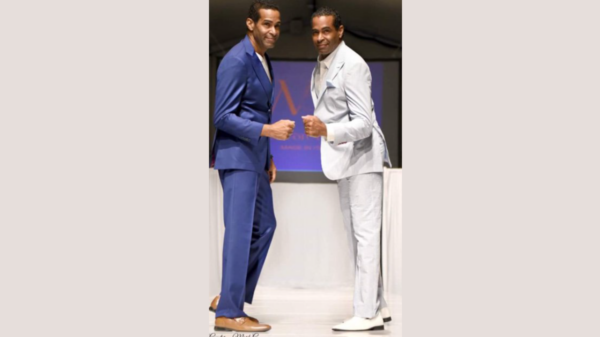By Jessica Daniels, BDO Staff Writer
If you have arthritis, you should give your joints plenty of rest. Just make sure the rest doesn’t turn into a permanent vacation. Even though your joints may complain, you need to keep them moving from time to time. In fact, regular exercise is one of the best arthritis remedies around. Your doctor can help you find an exercise program that’s right for you. In the meantime, take this short quiz to find out how much you know about exercise and arthritis.
1. Which of the following statements about exercise and arthritis is true?
a. Exercise has to be intense to do any good — no pain, no gain.
b. Many people with arthritis are too old to exercise.
c. Patients have to exercise every day to get any benefit.
Quiz: How Much Do You Know About Arthritis and Exercise?

If you have arthritis, you should give your joints plenty of rest. Just make sure the rest doesn’t turn into a permanent vacation. Even though your joints may complain, you need to keep them moving from time to time. In fact, regular exercise is one of the best arthritis remedies around. Your doctor can help you find an exercise program that’s right for you. In the meantime, take this short quiz to find out how much you know about exercise and arthritis.
1. Which of the following statements about exercise and arthritis is true?
a. Exercise has to be intense to do any good — no pain, no gain.
b. Many people with arthritis are too old to exercise.
c. Patients have to exercise every day to get any benefit.
d. Just about anyone with arthritis can benefit from light, easy workouts.
2. You shouldn’t exercise sore joints during a flare-up of rheumatoid arthritis.
True
False
3. Regular weightlifting can help ease pain and stiffness caused by arthritis.
True
False
4. Water exercises are an excellent choice for many people with arthritis.
True
False
5. Most patients have to exercise for a couple of months before they notice much improvement in their arthritis.
True
False
6. If you feel a little discomfort while stretching, you’ve probably pushed your joint too far. True or false?
True
False
7. Which of the following could be a sign that you may be over-exerting yourself?
a. Pain that lingers more than an hour after exercise
b. Swelling in a joint
c. Tiredness
d. All of the above
Your Results
1. Which of the following statements about exercise and arthritis is true?
The correct answer is: d. Just about anyone with arthritis can benefit from light, easy workouts.
It doesn’t take an Olympian effort to cope with arthritis. Simple, light exercises such as a walk around the block or 10 minutes of gentle stretching can work wonders. And don’t worry about being too old to work out — even people in their 100s can add exercise to their lives. No matter what your age, start slowly and get professional advice from a doctor, physical therapist, or personal trainer.
2. You shouldn’t exercise sore joints during a flare-up of rheumatoid arthritis.
The correct answer is: True
Joints are very vulnerable (not to mention painful) during a flare-up of rheumatoid arthritis. You should hold off on your usual stretches, range-of-motion exercises, weight lifting and other more serious exercises until the flare-up passes. If you have osteoarthritis, don’t
be afraid to exercise a sore joint. You can make your workout more comfortable by taking an over-the-counter pain reliever or applying an ice pack before exercise.
3. Regular weightlifting can help ease pain and stiffness caused by arthritis.
The correct answer is: True
Lifting weights is one of the best things you can do to manage your arthritis. Your joints will be stronger, more flexible, and less painful. And you don’t need bulging biceps to get results. Anyone of any age can lift weights. If you’re an older person, you may need to start with just one or two pounds or even no weight at all. Once you can do your routine with little effort, you can slowly increase your load. Your doctor, physical therapist, or personal trainer can suggest specific exercises and show you how to lift safely.
4. Water exercises are an excellent choice for many people with arthritis.
The correct answer is: True
Many people with arthritis have practically made the swimming pool their second home, and for good reason. For one thing, swimming, water aerobics, and other pool exercises provide a good workout without stressing the joints. Also, warm pool water can relieve stiffness and increase circulation. And, on top of all that, it’s fun!
5. Most patients have to exercise for a couple of months before they notice much improvement in their arthritis.
The correct answer is: True
Exercise has its immediate rewards-such as a feeling of accomplishment — but it usually takes about two months to notice an improvement in pain and stiffness. Some people, however, enjoy relief almost immediately.
6. If you feel a little discomfort while stretching, you’ve probably pushed your joint too far. True or false?
The correct answer is: False
Stretching is an essential part of exercise. It helps keep your joints flexible and protects them from injury. Experts recommend stretching to the point of mild discomfort and holding it for 10 to 30 seconds. Repeat this three to five times. Try to stretch every major muscle group every day.
7. Which of the following could be a sign that you may be over-exerting yourself?
The correct answer is: d. All of the above
Other possible signs of over-exertion include weakness, heavy sweating, coughing, chest discomfort, or dizziness. If you feel like you’ve gone too far, take a break. When you get your breath back, talk to your doctor or physical therapist about scaling back your exercise routine.









